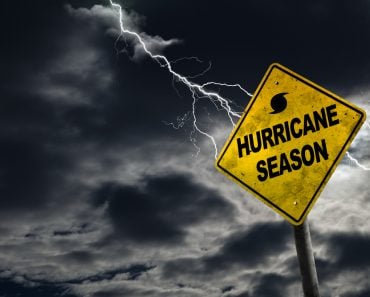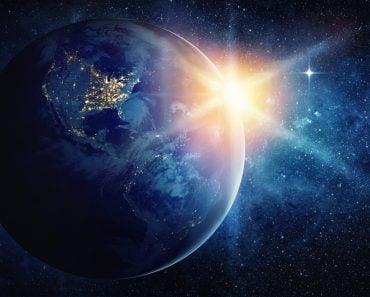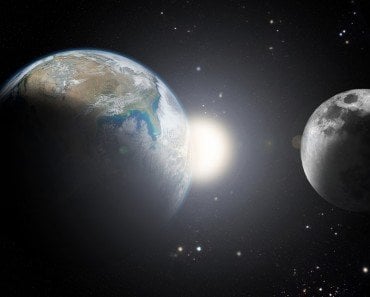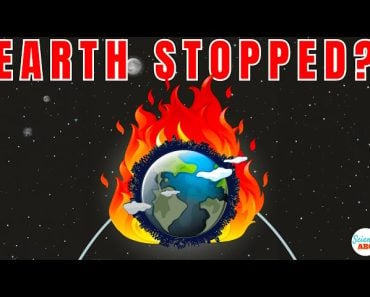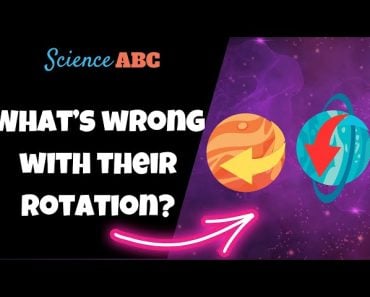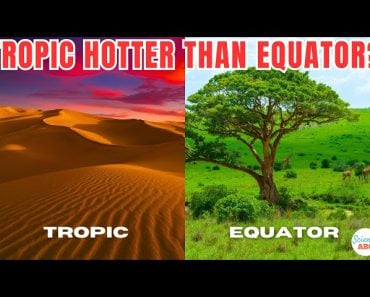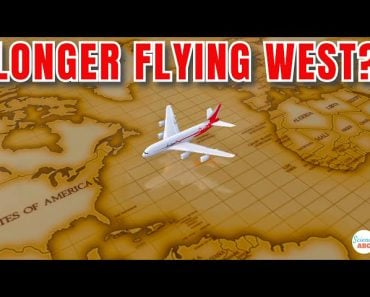Table of Contents (click to expand)
The Coriolis Effect is what causes hurricanes to spin differently in the Northern and Southern hemispheres. The Coriolis Effect is caused by the Earth’s rotation. As the Earth rotates, air currents in the atmosphere are affected. The Coriolis Effect causes air currents in the Northern hemisphere to rotate in a counter-clockwise direction, and air currents in the Southern hemisphere to rotate in a clockwise direction.
As Earth travels from West to East, air moving from the southern hemisphere to the northern hemisphere gets pushed to the right, causing hurricanes originating in the Northern hemisphere to spin in the counter-clockwise direction. Something similar happens in case of the southern hemisphere.
Hurricanes, cyclones, typhoons – you might call them different names due to differences in their physical properties, enormity and potential for destruction, but all of these natural phenomena have two things in common: they are deadly and they spin like crazy.
Speaking of spin, did you know that hurricanes spin in a counter-clockwise direction in the Northern hemisphere and a clockwise direction in the Southern hemisphere? Well, they do. The question is, why do they have such different behavior in the two hemispheres?
Recommended Video for you:
Air Currents In The Two Hemispheres
The Northern hemisphere is the part of the Earth that lies north of the Equator, which is an imaginary line dividing the planet into two equal parts; similarly, the Southern hemisphere lies south of the Equator.
The climatic conditions in different parts of these two hemispheres depend upon their position on the planet. For example, places near the Equator generally have a hot climate, whereas regions near the poles (far away from the Equator) are extremely cold.
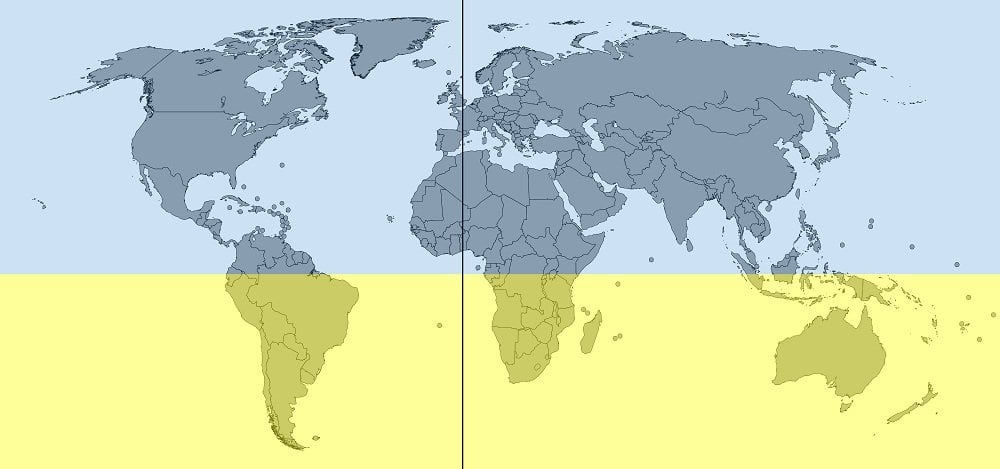
As a result, air in the polar regions is heavier and tends to fall towards the ground. As a result, it also ends up moving towards the Equator. Similarly, equatorial regions have warmer air that rises up and then moves towards the polar regions. This leads to movement, in a to-and-fro fashion, of natural currents of air that move from areas of high pressures (poles) to areas of low pressure (Equator). If Earth did not rotate as it does, we would have high-speed winds of almost 480 km/h (about 300 mph) gusting from the poles to the Equator and back.
However, Earth does spin, so the movement that these currents take is affected in a certain way. Since Earth is a sphere (well, almost… it’s slightly wider in the middle) that continuously rotates on its axis, the region near the Equator travels a tad bit faster than the regions lying farther away from it, as they have to travel further in the same number of hours, i.e. 24 hours.
This distinction directly impacts the way these air currents travel from the poles to the Equator and back.
The Coriolis Effect Affects The Direction Of Air Currents
Formulated by French engineer-mathematician Gustave-Gaspard Coriolis, the Coriolis effect is an inertial force that acts on objects in motion with respect to a rotating frame of reference. To understand this better, consider an example of two kids, say Kid A and Kid B, playing a game of catch with a slight twist. As opposed to standing stationary facing each other, these two kids are running along the boundary of an imaginary circle in the counter-clockwise direction, throwing the ball to one another all the while.
However, this small tweak of catching the ball while moving along a circle turns out to be a bad idea, because when Kid A throws, it seems to veer slightly to the right, instead of going straight to Kid B. The game is much more difficult than normal, but since these kids aspire to become physicists, they’ve already figured out that this is happening due to the Coriolis Effect.
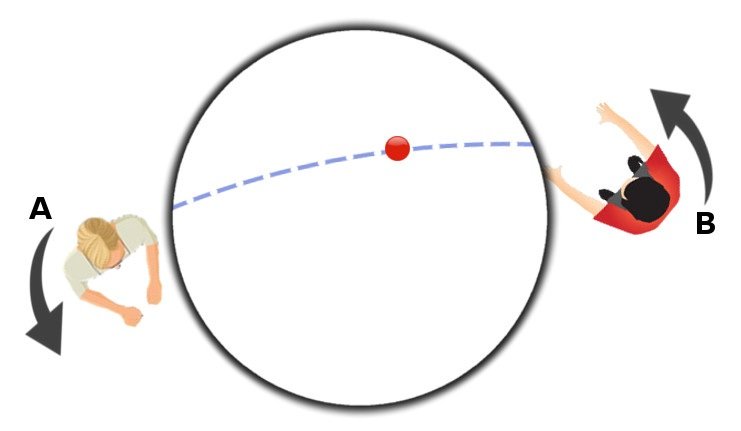
The Coriolis Effect has countless manifestations in our lives: soccer players use it in their favor while taking long shots, snipers have to take the direction of wind into account to accurately hit their targets; it also finds a lot of applicability in meteorology, physical geology, oceanography and studies of the dynamics of the atmosphere.
Now, let’s see how it applies in the case of strong wind currents moving across the surface of Earth.
When strong air currents (that result in hurricanes, cyclones etc.) move above the faster-moving equatorial regions, they get ‘pulled’ in the direction of Earth’s spin, thus veering off from an otherwise straight path.
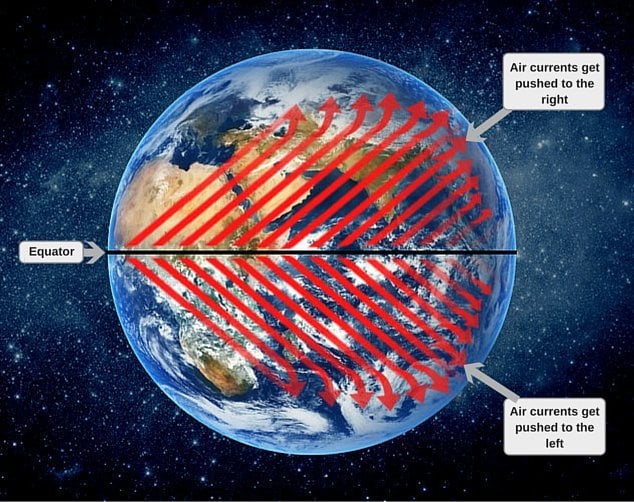
As Earth travels from West to East, air moving from the southern hemisphere to the northern hemisphere gets pushed to the right, causing hurricanes originating in the Northern hemisphere to spin in the counter-clockwise direction. Similarly, the hurricanes in the Southern hemisphere spin in the clockwise direction as the air gets pushed towards the left. You can check out the visual representation of the entire process in this video released by NOVA PBS Official.
So, if you have two friends from different hemispheres arguing over the true direction of hurricanes, enlighten them with this little piece of information and ask them to be a bit more accommodating in their opinions!



